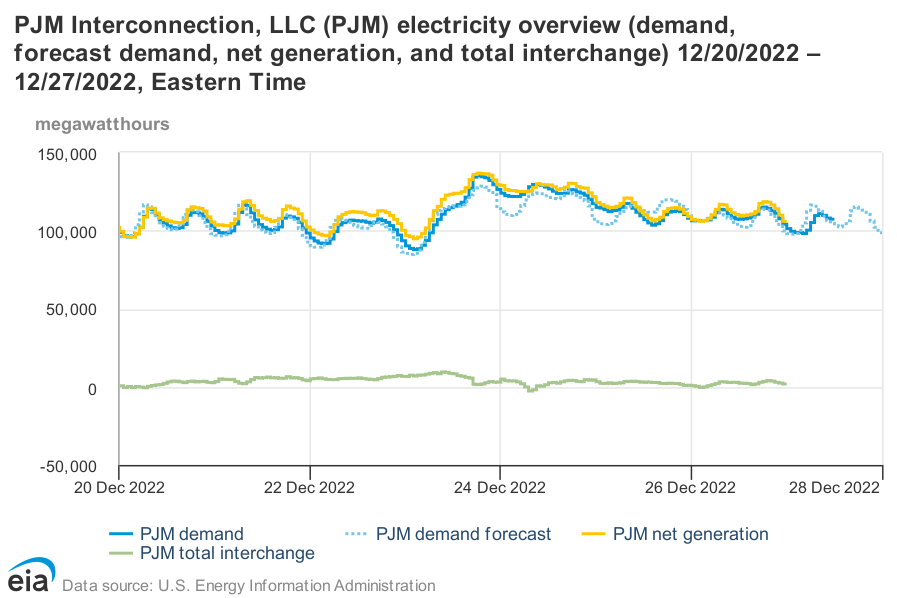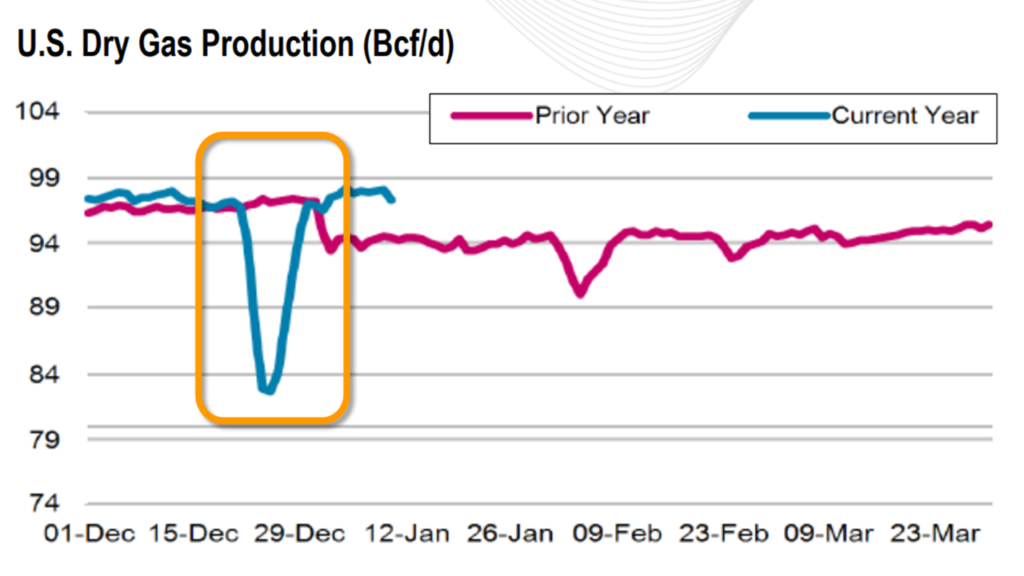In November 2022 the North America Electric Reliability Corporation (NERC) released its Winter Reliability Assessment. This report warned, “A large portion of the North American BPS [Bulk Power System] is at risk of insufficient electricity supplies during peak winter conditions.” NERC also highlighted the challenges associated with transmission system limitations during “large power transfers during stressed conditions.”
Of twenty regional transmission organization’s (RTOs), PJM was assessed as being more robust and resilient than most. NERC reported, “PJM expects no resource problems over the entire 2022–2023 winter peak season because installed capacity is almost three times the reserve requirement.” PJM coordinates movement of wholesale electricity in all or parts of Delaware, Illinois, Indiana, Kentucky, Maryland, Michigan, New Jersey, North Carolina, Ohio, Pennsylvania, Tennessee, Virginia, West Virginia, and the District of Columbia. PJM serves more than 65 million customers and covers almost 370,000 square miles. (This is larger than France, United Kingdom, Belgium, and Netherlands combined.)
On December 20, 2022 PJM issued a Cold Weather Advisory for what some would call Winter Storm Elliott. On December 21 the warning was upgraded to a Cold Weather Alert. Over the next three days additional warnings and alerts were released, all focused on maximizing generating capacity for expected high demand. Millions of Americans traveling for the year-end holidays were also quite aware of impending extreme weather. My wife and I almost decided to stay home, then adjusted our travel times and routes to better ensure we were in a safe place before the worst would arrive.
On the morning of December 23 PJM declared a Synchronized Reserve Event. The SRE instructs all generation resources to manually increase output to full. At 5:30 in the evening that same day PJM released an emergency instruction for operator-specific load-reductions and a separate order to deliver maximum generation to the network. Still, over the next 24 hours PJM struggled to avoid wide-spread blackouts. Other RTOs and individual electric providers were forced to initiate rolling blackouts (here and here).
There was a sharp increase in demand that supply just barely matched (please see the first chart below), despite all the warnings and efforts to increase supply, despite having installed capacity 3X reserve requirements. On December 24, shedding non-residential demand was probably as important to maintaining flow as increased generation.
On Christmas Eve PJM and the rest of us were rudely reminded that installed capacity is not necessarily operating capacity. According to immediate after-action assessments, over one-fifth (almost one-quarter) of PJM’s generating fleet was offline on Christmas Eve because of plant equipment problems and fuel supply failures. As highlighted in the second chart below, gas-fired (non) generation accounted for 70 percent of unplanned outages at PJM.
Consistent with prior agreements, over $2 billion in penalties have been assessed for failure to comply with PJM’s maximum generation orders. At least one utility is in the process of bankruptcy reorganization as a result of these penalties. Various efforts are underway to mitigate potentially counter-productive consequences of such penalties (here and here).
PJM’s internal analysis of causes and consequences related to Winter Storm Elliott is still underway. There will, no doubt, be a host of functional, financial, and technological reforms to consider. But from a Supply Chain Resilience perspective it is valuable to recognize the fundamental risk dynamics at play when fixed production/distribution capacity interacts with highly volatile demand and exogenous shocks. A reserve capacity thought to be three-times necessary in November was just barely enough one month later… not because the capacity per se was reduced, but because upstream channels delivering resources to the electric generation and distribution systems literally froze. Figurative freezing is an even more frequent risk.

